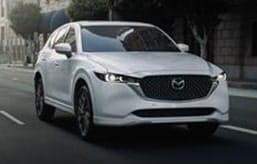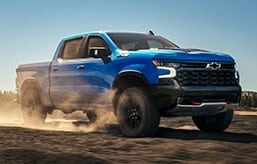- Twin-turbocharged V8 engine cranks out 697 horsepower and 663 lb-ft.
- Carbon-ceramic brakes are standard.
- Exterior styling changes include cooling vents and new roof-mounted wing.
Driven: 2023 Aston Martin DBX707 Has Performance for Days
Bring the whole family along to 193 mph
The DBX is far and away Aston Martin's most popular vehicle, accounting for half of the company's worldwide sales last year. And it's not hard to see why the DBX resonates with buyers of high-end luxury SUVs. It faithfully adapts the design, driving feel and craftsmanship that Aston Martin sports cars are known for to a more family-friendly vehicle. But if for some reason you were thinking the DBX lacked performance, there's a new version that might entice you: the 2023 Aston Martin DBX707.
The 2023 Aston Martin DBX707 starts by bumping the DBX's output by about 30%, then adds more performance hardware to help it handle as well as it goes.
So there's more power?
The answer to that question is an emphatic yes. Thanks to a technical partnership with Mercedes-AMG, the DBX707 uses a higher-performance version of the twin-turbocharged 4.0-liter V8 engine found in AMG applications. But Aston Martin didn't just take the engine and call it a day. Both turbochargers were upgraded and Aston subsequently gave the engine a completely new calibration resulting in a power output of 697 horsepower and 663 lb-ft. Not only is this 155 more horsepower than the standard DBX, but it's a whopping 120 horsepower and 36 lb-ft more than the same engine makes in the Mercedes-AMG G 63.
Managing that extra horsepower is a revised nine-speed automatic transmission. Now utilizing a multi-plate wet clutch in place of a torque converter, this transmission delivers 40% quicker shifts than in the standard DBX. All-wheel drive is standard, and the DBX707 features electronic center and rear differentials with custom tuning as well as a one-piece carbon-fiber driveshaft.
If you're wondering what's going to rein in all of this speed, Aston Martin has an answer: standard carbon-ceramic brakes for the 707. These carbon-ceramic brakes, which aren't even available on the regular DBX, are ideal for maximum and consistent braking performance during heavy use. Since the Aston has nearly 700 horsepower on tap, we're happy to see these as standard equipment.
Can something this big handle well?
Aston Martin claims to have spent a considerable amount of time making sure its new DBX707 provides just as much comfort as it does speed. We were already fans of the DBX's handling acumen, but Aston has taken new measures to further improve both feeling and stability. Changes to the front subframe have added considerable stiffness to the front end and coincide with stiffer suspension mounts and upgraded bushings. The DBX707 retains the standard model's air suspension but utilizes specific tuning for the new chassis enhancements as well as the new dampers. These changes, at least on paper, should not only make the DBX707 more responsive to steering inputs but also provide better body control during more aggressive driving.
As it turns out, what's on paper translates directly to the real world. Our time in the DBX707 included driving on mountain roads as well as about 100 miles on the highway. The big Aston feels equally at home in both environments. On the highway, the 707's steering doesn't suffer any nervousness nor does it ever feel vague and disconnected. Even with the optional 23-inch (!) wheel and tire package, the ride is surprisingly composed. You certainly feel and hear the impacts from larger potholes but they don't dramatically upset the ride.
Find a twisty stretch of road and the DBX707 is more than willing to get down to business. Perhaps the biggest surprise up the Aston's sleeve is just how natural the 707 feels while you hustle it around. Cranking a performance SUV up to 11 can sometimes create a near parody of the sports car experience, with hyper-quick reactions, an overly aggressive ride quality and tricky handling. But the Aston remains communicative and compliant even when driving rapidly on twisty roads. Credit should also go to the DBX707's impressive 52/48 front-to-rear weight distribution just as much as it goes to the retuned electronic differentials to help you maximize traction for both turning and acceleration.
The standard carbon-ceramic brakes deserve special mention since they can rein in rapid progress without a moment of hesitation or fade. As an added bonus, the brakes remain easy to control and generally squeak-free in normal city traffic, even after heavy use.
In fact, you almost forget the near 700 hp that lives just beneath your right foot. The transmission is well-calibrated for the brawny power curve of the 707's monster motor. And should you feel the need to pass a few vehicles, the 707 will happily blast into triple-digit speeds without hesitation.
But if you need reminding as to just how potent the DBX707 is, you can find an empty stretch of road, activate the 707's launch control system and experience wheelspin from all four wheels. Aston claims the DBX707 can accelerate from 0 to 60 mph in just over 3 seconds, and we have no reason to doubt that figure.
Hmm, the 707 looks different than a regular DBX
Yep. Starting at the front, there's a larger grille opening that provides a more distinctive look as well as increased cooling for the engine and the transmission. The daytime running lights have been redesigned, as have the front splitter and front brake cooling ducts. As you would want on an Aston Martin, or any high-performance vehicle, the hood vents are completely functional.
The rocker panels have been reprofiled, along with the fenders, giving the 707 a Vantage-like stance. Out back, there's a subtle roof-mounted wing, a new bumper and a giant diffuser to make the 707 just as distinctive from the back as it is from the front. There's also a new quad-tipped exhaust system to aurally reinforce the performance message.
What about the interior?
Inside, the center console has been reprofiled and gains a new, easy-to-reach drive mode selector. This puts those modes at your fingertips; previously, they were buried in an on-screen submenu. Other settings, such as the active exhaust button, manual shift mode for the transmission and stability control settings, are also within easy reach.
But we still think the control knob for the infotainment system is too cramped to be operated properly. Our suggested next step in improving the DBX isn't more performance but an entirely new infotainment system. The current system critically lacks touchscreen functionality as well as many of the more modern functions offered by systems in high-end rivals.
The 707 comes standard with sport seats (less aggressive comfort seats are a no-cost option) and we found them to be fairly comfortable and supportive without being too aggressively bolstered. But the padding is quite firm, so you might want to give these a test sit before buying. Otherwise, the DBX707 is a well-appointed and well-constructed luxury SUV and offers a level of personalization that few other vehicles, SUV or otherwise, can match.
Edmunds says
With seemingly never-ending one-upmanship in the ultra-high-performance SUV segment, it would have been easy for Aston Martin to overdo the DBX707. Instead, the 707 represents an improved and more well-rounded version of the DBX with none of the compromises we sometimes see in performance-focused SUVs. Capable of crushing hundreds of highway miles in a day, blitzing up an epic mountain pass or just going out for a grocery run, the DBX707 proves it's the most versatile Aston Martin yet.








 by
by